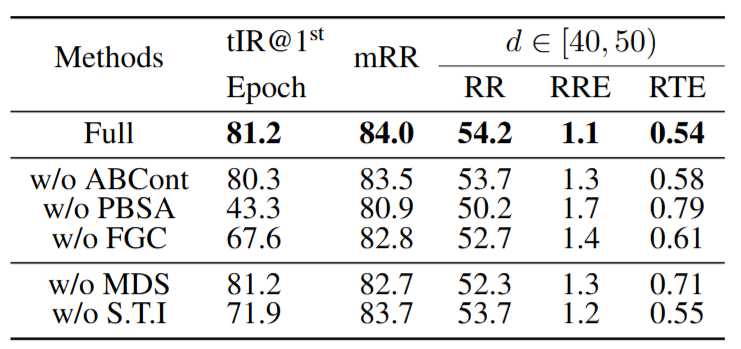目录
- 前言
- 1.杭电oj——Bitset
- 2.杭电oj——进制转换
- [3.力扣——LCR 123. 图书整理 I](https://leetcode.cn/problems/cong-wei-dao-tou-da-yin-lian-biao-lcof/description/)
- [4.力扣——LCR 027. 回文链表](https://leetcode.cn/problems/aMhZSa/)
- [5.力扣——1614. 括号的最大嵌套深度](https://leetcode.cn/problems/maximum-nesting-depth-of-the-parentheses/description/)
- 6.力扣——20.有效的括号
- [7.力扣——739. 每日温度](https://leetcode.cn/problems/daily-temperatures/description/)
- [8.力扣——2487. 从链表中移除节点](https://leetcode.cn/problems/remove-nodes-from-linked-list/)
- 结语
前言
在上一期作品 (蓝色字体可以点进去看上期作品) 我们对栈有了初步的了解,这期我们来进行实战,做一些栈相关的题。

1.杭电oj——Bitset
(蓝色字体点进去看原题)
#include<iostream>
#include<stdexcept>
#include<stack>
using namespace std;template<typename T>
class Stack {
private:struct Node{T data;Node* next;Node(T x):data(x),next(NULL){}};Node* head;int size;
public:Stack():size(0),head(NULL){}~Stack();void push(T x);T top() const;T pop();bool empty();int getSize();
};template<typename T>
Stack<T>::~Stack() {while (head) {Node* t = head;head = head->next;delete t;}
}template<typename T>
void Stack<T>::push(T x) {//插入操作用头插法,即头节点为栈顶Node* newNode = new Node(x);newNode->next = head;head = newNode;size++;
}template<typename T>
T Stack<T>::top() const {if (!head) {throw std::underflow_error("Stack is empty!");}return head->data;
}template<typename T>
T Stack<T>::pop() {if (!head) {throw std::underflow_error("Stack is empty!");}T result = head->data;Node* t = head;head = head->next;delete t;size--;return result;
}template<typename T>
int Stack<T>::getSize() {return size;
}template<typename T>
bool Stack<T>::empty() {return size == 0 ? 1 : 0;
}int main() {int n;while (cin >> n) {Stack<int>s;while (n) {s.push(n % 2);n /= 2;}while (!s.empty()) {int x = s.pop();cout << x;}cout << endl;}return 0;
}2.杭电oj——进制转换
(蓝色字体点进去看原题)
#include<iostream>
#include<exception>
using namespace std;template<typename T>//定制栈里面的元素,就像vector一样
class Stack {
private:int size;//既为栈元素个数又为栈顶位置int capacity;T* data;void resize();
public:Stack():data(new T[capacity]),size(0),capacity(10){}//构造函数,申请类型为T容量为capacity的内存空间,相当于数组~Stack();void push(T x);T top() const;T pop();int getSize() const;bool empty() const;
};template<typename T>
void Stack<T>::resize() {//顺序栈扩容int newCapacity = 2 * capacity;T* newData = new T[newCapacity];for (int i = 0; i < size; i++) {newData[i] = data[i];}delete[]data;data = newData;capacity = newCapacity;
}template<typename T>
Stack<T>::~Stack() {delete[]data;
}template<typename T>
void Stack<T>::push(T x) {if (size == capacity) {resize();}data[size++] = x;
}template<typename T>
T Stack<T>::top() const {if (!size) {throw std::underflow_error("Stack is empty");//如果栈为空即为非法状态,抛出异常}return data[size - 1];//注意栈元素序号从零开始
}template<typename T>
T Stack<T>::pop(){if (!size) {throw std::underflow_error("Stack is empty");}return data[--size];
}template<typename T>
int Stack<T>::getSize() const {return size;
}template<typename T>
bool Stack<T>::empty() const {return size == 0 ? 1 : 0;
}int main() {int n,base;while (cin >> n >> base) {if (!n) {//如果进制数为0那么结果自然为零cout << 0 << endl;continue;}if (n < 0) {//如果是负数就输出个负号cout << "-";n = -n;}Stack<int>s;while (n) {s.push(n % base);n /= base;}while (!s.empty()) {int x = s.pop();if (x < 10)cout << x;//小于零就直接输出这个数else {printf("%c", 'A' + x - 10);//大于零就输出字符,记住这个转换公式'A'+x-10}}cout << endl;}return 0;
}
3.力扣——LCR 123. 图书整理 I
/*** Definition for singly-linked list.* struct ListNode {* int val;* ListNode *next;* ListNode() : val(0), next(nullptr) {}* ListNode(int x) : val(x), next(nullptr) {}* ListNode(int x, ListNode *next) : val(x), next(next) {}* };*/
class Solution {
public:vector<int> reverseBookList(ListNode* head) {//这一题就是反转链表,也就是逆序输出链表stack<int> s;while(head){s.push(head->val);head=head->next;}vector<int>ans;while(!s.empty()){ans.push_back(s.top());s.pop();}return ans;}
};
4.力扣——LCR 027. 回文链表
/*** Definition for singly-linked list.* struct ListNode {* int val;* ListNode *next;* ListNode() : val(0), next(nullptr) {}* ListNode(int x) : val(x), next(nullptr) {}* ListNode(int x, ListNode *next) : val(x), next(next) {}* };*/
class Solution {
public:bool isPalindrome(ListNode* head) {ListNode*curr=head;stack<int>s;while(curr){s.push(curr->val);curr=curr->next;}while(head){if(head->val!=s.top())return false;s.pop();head=head->next;}return true;}
};
5.力扣——1614. 括号的最大嵌套深度
class Solution {
public:int maxDepth(string s) {//思路:如果是(进栈在cnt++,如果是)出栈cnt--,每次用ret与cnt比较,就可以得到最大值stack<char>st;int cnt=0,ret=0;for(int i=0;i<s.size();i++){if(s[i]=='('){st.push(s[i]);cnt++;}if(s[i]==')'){st.pop();cnt--;}ret=max(ret,cnt);}return ret;}
};
6.力扣——20.有效的括号
class Solution {bool isLeft(char s){return s == '(' || s == '{'|| s == '[';}bool isMatch(char l, char r){return l == '(' && r == ')' ||l == '{' && r == '}' || l == '[' && r == ']';}public:bool isValid(string s) {stack<char> stk;for(int i=0;i<s.size();i++){if(isLeft(s[i])){//如果是左括号都入栈stk.push(s[i]);}else{if(stk.empty())return false;//如果不是左括号并且这时候栈为空就说明没有与之匹配的括号if(!isMatch(stk.top(), s[i]))return false;//如果不匹配就返回空stk.pop();}}if(!stk.empty())return false;//遍历完以后如果栈不为空那么就是说还有左括号没匹配return true;}
};
7.力扣——739. 每日温度
class Solution {
public:vector<int> dailyTemperatures(vector<int>& t) {vector<int>ans;//用于保存结果vector<int>stk;//这个vector当做栈用,用于记录t的位置for(int i=0;i<t.size();i++){ans.push_back(0);//给结果数组初始化为0}for(int i = 0; i < t.size(); i++){while(stk.size() && t[ stk.back() ] < t[i]){ans[ stk.back() ] = i - stk.back();stk.pop_back();}stk.push_back(i);//如果栈为空并且t[ stk.back() ] > t[i],就插入当前位置}return ans;}
};
8.力扣——2487. 从链表中移除节点
/*** Definition for singly-linked list.* struct ListNode {* int val;* ListNode *next;* ListNode() : val(0), next(nullptr) {}* ListNode(int x) : val(x), next(nullptr) {}* ListNode(int x, ListNode *next) : val(x), next(next) {}* };*/
class Solution {
public:ListNode* removeNodes(ListNode* head) {vector<ListNode*> s;//用vector当做栈使用,存储单调不减的结果链表ListNode* dummy = new ListNode(1000000,head);//利用这个虚拟头结点返回结果链表,赋值一个比链表所有值都大的数,dummy->next=headListNode*now = head;s.push_back(dummy);while(now){while(s.back()->val < now -> val){//如果遍历到当前数大于栈顶值,就弹栈,直到不大于为止s.pop_back();}s.push_back(now);now=now->next;}for(int i=0;i<s.size()-1;i++){s[i]->next=s[i+1];//改变栈元素节点的指向形成新链表,即为结果链表}s.back()->next=NULL;//尾结点下一个节点必然为空return dummy->next;//dummy就是结果链表}
};
结语
想必做过这个题库的帅哥对栈的理解与应用有了提升,那么对初级数据结构——栈的学习就告一段落,下个作品我会与大家深入对初级数据结构——队列学习。

想看更多内容可以关注我,看我作品,关注我让我们一起学习编程,希望大家能点赞关注支持一下,让我有持续更新的动力,谢谢大家













![[含文档+PPT+源码等]精品基于springboot实现的原生Andriod手机使用管理软件](https://img-blog.csdnimg.cn/img_convert/485b39844736dda91d34414e2089d39c.jpeg)





